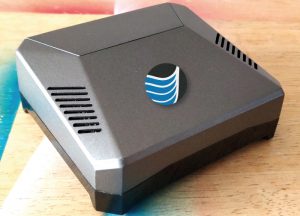Are you paying for 70Mbps but only getting 1Mbps? If you’ve checked your router and everything seems in order there, then you might want to be reliably checking your broadband speed as well as your Wi-Fi.
When you obtain broadband from an Internet Service Provider (ISP), they are responsible for getting their broadband service to your home as far as the router. That’s where their responsibility ends. After that, your Wi-Fi is up to you.
A speed checker won’t check the speed of your Wi-Fi inside your home, but rather the broadband speed that is delivered to your premises before going through your router.
It’s worth remembering that you will often be offered broadband speeds of ‘up to’ a certain Mbps – That means that roughly 10% of customers will get that speed, but many more will get lower.
What is broadband speed affected by?
There are lots of factors that affect broadband speed.
- The distance the property is from the exchange
- The wiring (quality, number of joints)
- Router quality
- Time of day broadband is being used (How many people are vying for bandwidth at the same time)
When you are measuring broadband speed, it can also be affected by the router and the computer being used to test.
The best way to get an accurate measure of your broadband speed is by connecting a device to the router using an Ethernet cable. Internet connections via Ethernet cable are faster and more reliable than Wi-Fi, so will give you a more reliable measure of broadband speed.
To test your broadband speed, turn off the Wi-Fi on your device and then plug it directly into the router using an Ethernet cable.
Remember that your ISP can’t do anything about your internet speed from your router onwards. By measuring the speed through an Ethernet cable, you can see how fast it’s coming in at. You are likely to measure a much lower speed using a device on the Wi-Fi. If the speed you measure via Ethernet cable is close to your Fibre-to-the-Cabinet (FTTC) speed, then you’re doing alright. But you can’t expect to get the same speeds on a device using the Wi-Fi like your tablet or phone.
How can I test my own broadband speed?
There are two types of speed tests you can do – Casual and Serious.
How to Do a Casual Broadband Speed Test
Go to any broadband speed checker on your browser – You can find them on Google. You can run the test directly through your browser.
How to Do a Serious Broadband Speed Test
This one is a bit more involved.
- Turn off your PC / laptops Wi-Fi connection
- Connect the PC / laptop to the router using an Ethernet cable
- Turn off any other devices that are using the internet connection (e.g. TV’s, smartphones etc
- Restart your router
- Restart your PC / laptop and keep any unnecessary programmes closed down (that includes anti-virus software)
- Open a clean browser window and go to your chosen broadband speed tester
What results should I be getting?
To check if the results seem reliable, you can use different browsers and see if there is a difference, for example, between Edge and Chrome. If you are getting approximately the following speeds on the below connections, then you don’t have any major problems.
ADSL connection – 7Mbps
ADSL2 connection – 12-16Mbps
FTTC connection – 30Mbps
Cable connection – 50Mbps
Mobile broadband connection – 20Mbps
Remember that the results can vary and can be affected by:
- The server
- The local exchange
- The internet itself
- And more!
It may also be worth testing the speed at varying times of day and see what you find.
How do I know which broadband speed checker to use?
For the best results, you should use a local service with the lowest latency or ‘ping’ rate.
According to the Guardian, the three best speed checkers were:
I’ve tested my broadband speed and it looks fine – So why am I having issues?
Maybe you’ve got a Wi-Fi problem rather than a broadband speed problem.
If your device works better when it’s closer to the router, then perhaps the problem is the signal strength, and getting that signal to where you are wanting to use your device most.
If your Wi-Fi is just slow in general, it could be that your router is the problem. If your ISP won’t upgrade the one you currently have, then maybe you could replace it with an alternative and upgrade it?
The problem could even be your device itself! See if a friend or family member has a different / newer device that you could test on your Wi-Fi and see if you encounter the same problems.
Who can help with broadband speed tests and Wi-Fi issues?
If all of the above feels a bit confusing or if you’ve carried out the test but don’t understand the results then don’t panic! Here at Geekabit, our Wi-Fi experts are currently developing our own best-in-class solution for supporting people who wish to record and verify their internet speeds. Coming soon!


